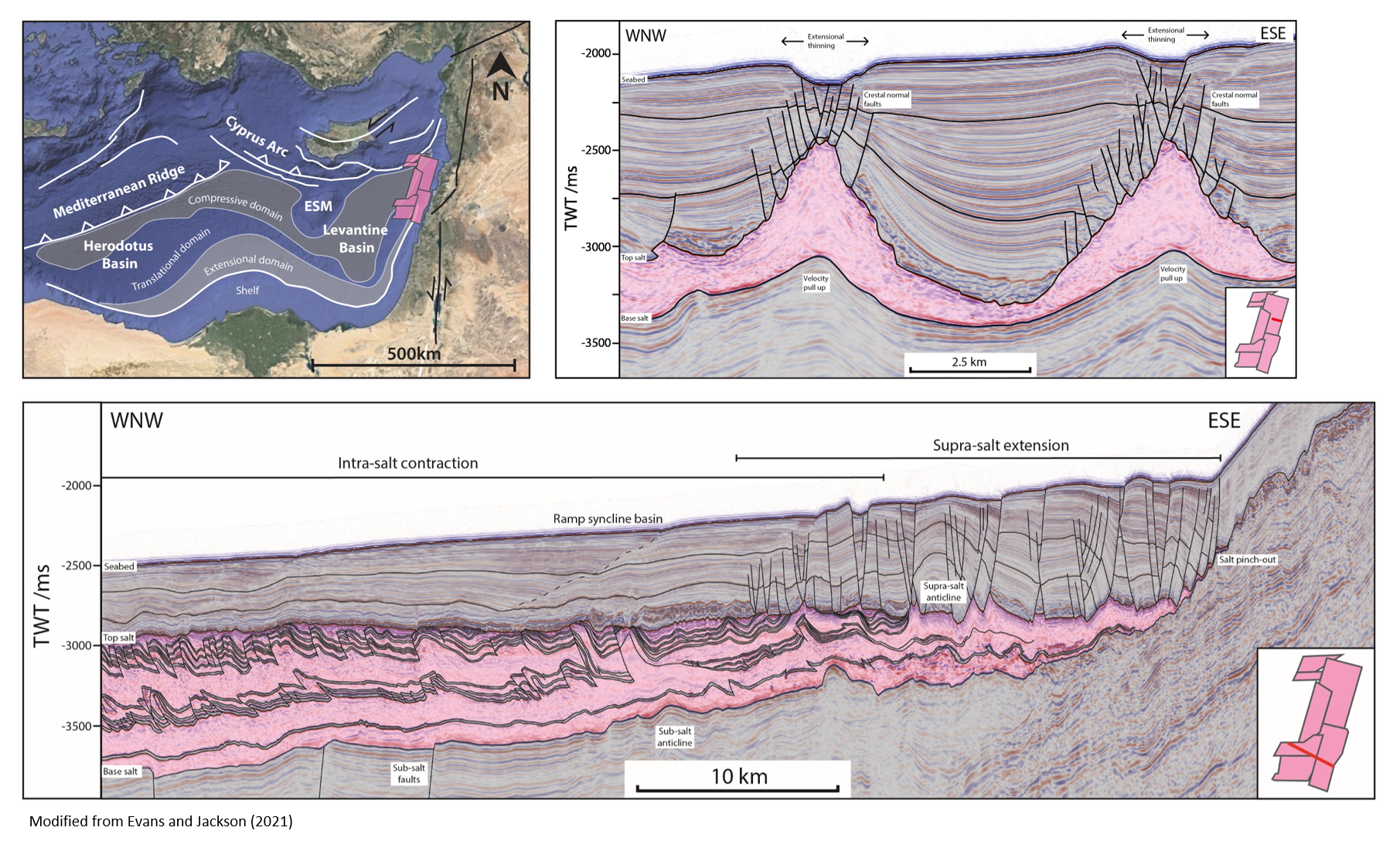Webinar: Salt structure and strain development in the eastern Mediterranean, and Kurdistan Oil Field trapping mechanisms

Eastern med composite fig.
Structural geology network group invites you to a webinar on salt structure and strain development in the eastern Mediterranean, and Kurdistan Oil Field trapping mechanisms. Sian Lianne Evans from UIO and Nils Bang from DNO will be presenting. Don't miss out on this great event.
| Date | Time | Duration | Register by | Location |
| 12. April 2023 | 13:00 | 2 Hours | 12. April 2023 | Teams |
13.00-14.00
Sian Lianne Evans (UiO) : Salt structure and strain development in the eastern Mediterranean: an analogue for early-stage salt basin evolution and implications for CCS
Summary:
The Messinian salt in the eastern Mediterranean is a young and relatively undeformed salt giant. This allows us to gain valuable insights into the early stages of salt basin evolution, which are often overprinted and poorly imaged in more mature salt basins. In this presentation we look at the partitioning of intra-salt and supra-salt strain in response to gravitational drivers, with implications for velocity modelling and drilling through thick salt. Finally, we compare this to the mature salt tectonics of the Norwegian-Danish Basin and its potential for CO2 storage.
14.00-15.00
Nils Bang (DNO): Kurdistan Oil Field trapping mechanisms. A story of dynamic seals, breached seals and oil seeps. Quantifying fault sealing capacity with examples from the Tawke Field, Kurdistan, Iraq
Kurdistan Oil Field Trapping Mechanisms.
A story of dynamic seals, breached seals and oil seeps.
Quantifying fault sealing capacity with examples from the Tawke Field, Kurdistan, Iraq

Summary:
The Tawke Field is situated at the northeast margin of the Arabian Shield in the northernmost extension of the Zagros Mountain Chain, close to the triple point of the Turkish and Iranian plates. The tectonic history covers two episodes of rifting in the Triassic and the Upper Jurassic to Lower Cretaceous. This is followed by the formation of the Zagros Mountain Chain that began in the late Campanian and finished in the Pliocene.
The Tawke Oil Field produces from two fractured carbonate reservoirs of Cretaceous and Oligocene age. A world class oil seep is situated at the top of the structure.
This presentation will go through an introduction of the development of the Tawke structure and will discuss the trapping mechanisms for the oil field.
The hydrocarbon columns of the two reservoirs are both controlled by dynamic sealing faults. The capacity of the fault seals will be discussed and quantified together with the migration of the hydrocarbons and the origin of the oil seeps.
How a webinar works
You register as usual through the registration button above. Once you are registered you will get an invitation via email to join this webinar.
FORCE uses Teams Video for this webinar, and has proven to work successfully.
We recomment that everyone joining turn off their camera and microphone when joining.
If you have any questions you can use the chat or wait until the end of the talk.
FORCE seminars have previously been fully booked with waiting lists so you are encouraged to sign up as soon as you know you will attend.
Once you have registered, you will receive an outlook invitation with the Teams link. You will receive the link a few days prior to the webinar.
You cannot forward the link to people who is not registered.
Participation fees:
FORCE members: Free
Non-members: NOK 500,-
University/student: Free
Important information:
You can register as a FORCE member and pay "FORCE member" price if you are an employee of a member company.
All FORCE member companies are listed here.
Payment is made online by credit card. Please note that no refunds will be given after you have signed up.
If you for any reason can not attend the workshop, you are welcome to send a representative, just inform Linn Smerud as soon as there are changes.
Updated: 13/04/2023
